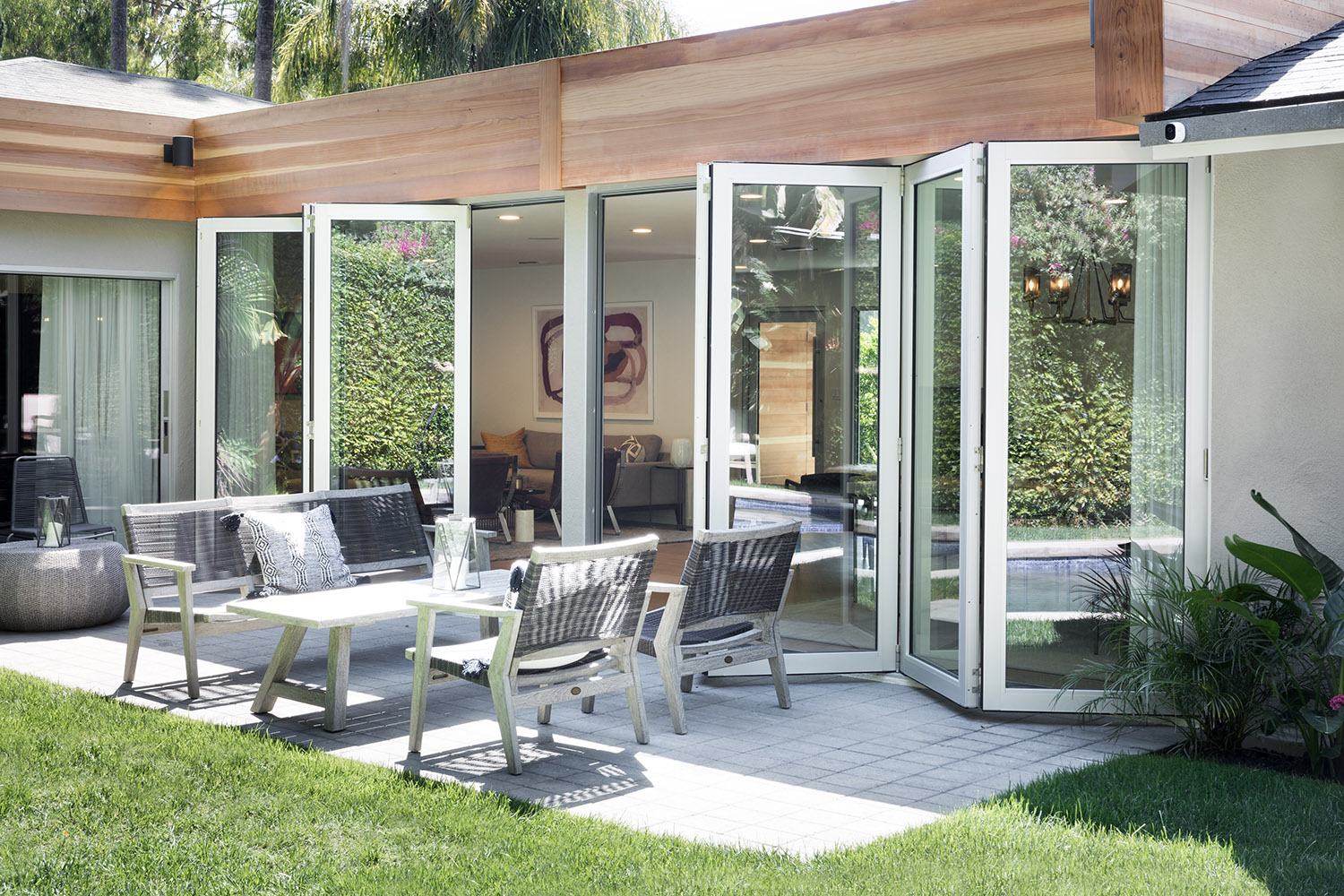
Overall project considerations, functionality, performance, aesthetics, available wall space, desired purpose and interaction, and budget all determine which type of multi-panel door is appropriate for a given project, including multi-slide, bifold and lift-and-slide configurations.
Multi-slide and lift-and-slide doors have similar configurations, but quite different operating experiences, Brunk says. The systems also employ different sills, with the lift and slide using a recessed track while the multi-slide sill is fully exposed on the top surface, though she points out both have performance sill options. Bifold options, she says, have flexible configurations and the accordion opening/closing allows for use where wall space is limited.
“Bifold doors tend to have higher performance levels because each panel does not have to be utilized for each use,” says Solar Innovations President, Greg Header. “Bifold doors can incorporate a swing door into the unit for ease of access, but the stacking of the remaining panels can reduce the overall size of the opening.” Multi-slides, on the other hand, can pocket into a wall to give a completely open space. Those doors, however, generally necessitate a wider jamb and higher sill compared to bifolds.
Although homeowner preference is a huge factor, where the door is placed also influences the choice. Bifold panels generally project, so proper clearance around the system is necessary, says Jeff Kibler, architectural and commercial manager with Weather Shield Windows & Doors. Most are also top-hung so structural headers must be able to support the roof loads and the door load hanging from it. Bifold doors also are difficult mechanisms to try to automate; Kibler says he hasn’t seen any automated bifold systems yet.
Multi-slides have variations, including those that let the panels pocket completely into the wall cavity. With that, however, comes the need for a wider jam depth to accommodate stacking panels and an extra-wide wall if several panels are involved. “Water performance can be somewhat limiting on those door systems, as well,” Kibler says. “They always recommend having large overhangs to protect them from driving elements.”
“Multi-slide doors are easy to install and maintain and are a highly cost-effective means of creating huge openings for indoor-outdoor living. Bi-fold systems can provide slightly better air and acoustic performance and allow for single-track operation, but the hardware is higher cost, and the stacking location of the bifold panels needs to be well-planned. Lift and slide systems provide excellent air, water, structural, and acoustic performance and the ability to move enormous panels with relatively little force, but the hardware components are highly engineered and add material costs to the overall system.” —Brian Leizerowicz, commercial sales director, Western Window Systems
“If [a homeowner] is looking for energy efficiency or higher water performance, bifolds are the best choice,” says Header. “If they are in search of motorization or larger width panels, multi-slide doors are preferred.”
